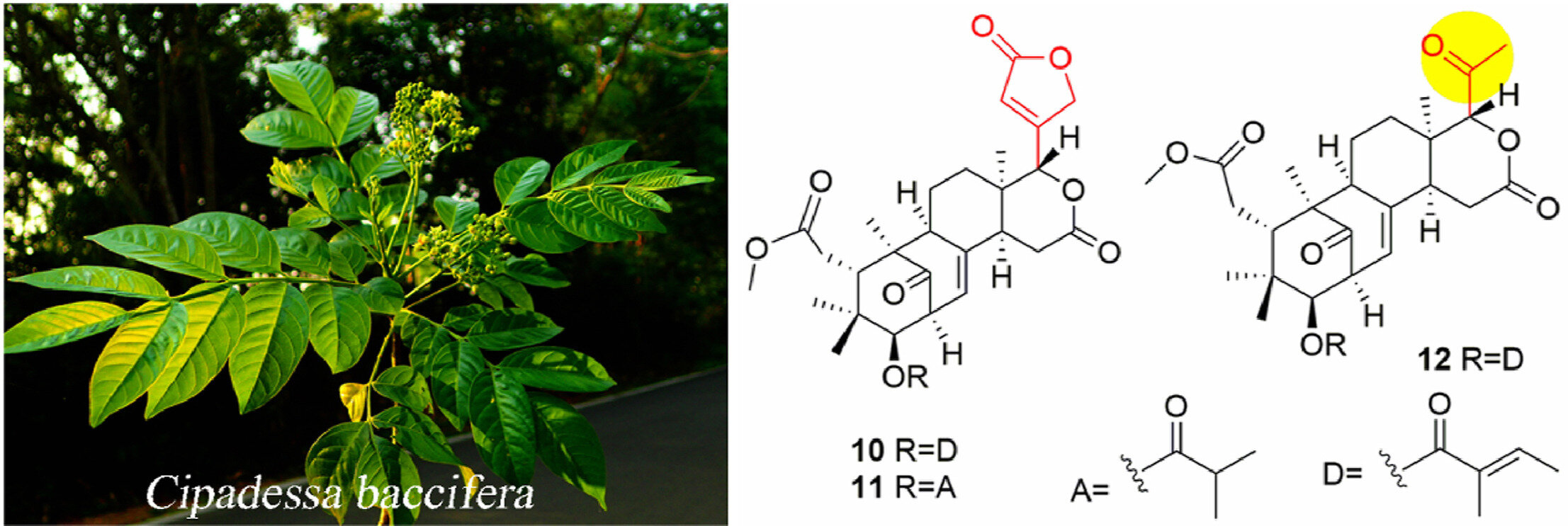Undescribed mexicanolide-type limonoids are isolated from twigs and leaves of Cipadessa baccifera
Cipadessa baccifera is a pinnately-leaved shrub that is found mainly in tropical Asia. The Dai people of Xishuangbanna, southwestern China, have traditionally used it as a folk medicine to treat various diseases such as dysentery, malaria, pruritus (itchy skin), rheumatism, and burns and scalds.
Previous phytochemical studies on Cipadessa species have led to the isolation of structurally diverse rimenoesters (e.g., melaleucines, methylglycinate, trimethoprim, and cyclomethoprim).
In a continuing search for biologically active subphylum compounds from the neem family, researchers at the Western Tropical Botanical Garden (XTBG) isolated 12 previously undescribed subphylum compounds and seven known analogues from leaves and twigs of C. baccifera.
The researchers conducted phytochemical studies of the petroleum ether fraction of the twigs and leaves of C. baccifera. They isolated 19 citrullines of the Mexican lactone type, including 12 previously undescribed citrullines (1-12) and seven known analogues (13-19).
In addition, cipaferen R (12) is the first tetraterpenoid derivative to biodegrade with a unique acetyl group at C-17. Among these isolates, no compounds exhibited nematicidal activity against the root-knot nematode M. incognita and antifungal activity against F. oxysporum f. sp. cubense and R. solanacearum.
They also demonstrated moderate acetylcholinesterase inhibitory activity of several merxane-like limonids (1, 14, 17 and 18).
"This study not only enriches the chemical diversity of the merxane limonoid subphylum, but also lays the foundation for the discovery of bioactive natural products from merxane herbs," Professor Youkai Xu, a corresponding author of the study, said.


